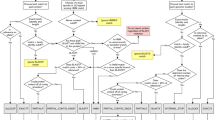Abstract
Identification of genetic markers involved in stress response to physical factors or chemical substances in organisms is a challenging task. Typing of upregulated gene expression due to selective antibacterial pressure is a promising approach in the search of molecular mechanisms responsible for development of resistance. cDNA-Fluorescent Amplified Fragment Length Polymorphism (cDNA-FAFLP) strategy was developed and applied in the search of antimycotic drug resistance marker(s) in medically important fungi as an alternative method to microarray analysis. We compared differential gene expression of two sensitive Candida albicans reference strains (ATCC 10231 and ATCC 60133) and two of their paired resistant to fluconazole and itraconazole mutants. Resistant mutants Candida albicans FLC-R, resistant to fluconazole (MIC > 128 μg/ml) and Candida albicans ICZ-R, resistant to itraconazole (MIC > 4 μg/ml) were obtained in subcultures with gradual increase of the antifungal in the culture medium. cDNA-AFLP profile in both itraconazole resistant mutants showed specific spectrophotometric peaks with 5–6-fold RNA overexpression product of 500 bp length compared to the sensitive strains. Fluconazole mutants do not reveal RNA level changes under tested by us typing conditions. These results indicate that the cDNA-FAFLP strategy is a relatively rapid, simple, and reliable method for simultaneous typing of both constitutive and induced differences in expression of host genes providing insight into the biological processes involved in response to drugs in bacteria and fungi. Moreover, this methodology could be tested for typing of the genome response of any organism to physical or chemical stress factors.




Similar content being viewed by others
References
Poretsky, R. S., Hewson, I., Sun, S., Allen, A. E., Zehr, J. P., & Moran, M. A. (2009). Comparative day/night metatranscriptomic analysis of microbial communities in the North Pacific subtropical gyre. Environmental Microbiology, 11, 1358–1375.
Jayaraman, A., Puranik, S., Rai, N. K., Vidapu, S., Sahu, P. P., Lata, C., et al. (2008). cDNA-AFLP analysis reveals differential gene expression in response to salt stress in foxtail millet (Setaria italica L.). Molecular Biotechnology, 40, 241–251.
Xiaohu, X., Heping, L., & Chaorong, T. (2009). A silver-staining cDNA-AFLP protocol suitable for transcript profiling in the latex of Hevea brasiliensis (para rubber tree). Molecular Biotechnology, 42, 91–99.
Breyne, P., Dreesen, R., Cannoot, B., et al. (2003). Quantitative cDNA-AFLP analysis for genome wide expression studies. Molecular Genetics and Genomics, 269, 173–179.
Vuylsteke, M., Peleman, J. D., & van Eijk, M. J. (2007). AFLP-based transcript profiling (cDNA-AFLP) for genome-wide expression analysis. Nature Protocols, 2, 1399–1413.
Durrant, W. E., Rowland, O., Piedras, P., Hammond-Kosack, K. E., & Jones, J. D. (2000). cDNA-AFLP reveals a striking overlap in race-specific resistance and wound response gene expression profiles. The Plant Cell, 12, 963–977.
Reijans, M., Lascaris, R., Groeneger, A. O., et al. (2003). Quantitative comparison of cDNA-AFLP, microarrays, and GeneChip expression data in Saccharomyces cerevisiae. Genomics, 82, 606–618.
Milioni, D., Sado, P. E., Stacey, N. J., Domingo, C., Roberts, K., & McCann, M. C. (2001). Differential expression of cell-wall-related genes during the formation of tracheary elements in the Zinnia mesophyll cell system. Plant Molecular Biology, 47, 221–238.
He, P., Friebe, B. R., Gill, B. S., & Zhou, J. M. (2003). Allopolyploidy alters gene expression in the highly stable hexaploid wheat. Plant Molecular Biology, 52, 401–414.
Bachem, C. W. B., van der Hoeven, R. S., de Bruijn, S. M., Vreugdenhil, D., Zabeau, M., & Visser, R. G. F. (1996). Visualization of differential gene expression using a novel method of RNA fingerprinting based on AFLP: Analysis of gene expression during potato tuber development. The Plant Journal, 5, 745–753.
Chapman, N. H., Burt, C., & Nicholson, N. (2009). The identification of candidate genes associated with Pch2 eyespot resistance in wheat using cDNA-AFLP. Theoretical and Applied Genetics, 118, 1045–1105.
Noel, L., Thieme, F., Nennstiel, D., & Bonas, U. (2001). cDNA-AFLP analysis unravels a genome-wide hrpG-regulon in the plant pathogen Xanthomonas campestris pv. vesicatoria. Molecular Microbiology, 41, 1271–1281.
Decorosi, F., Viti, C., Mengoni, A., Bazzicalupo, M., & Giovannetti, L. (2005). Improvement of the cDNA-AFLP method using fluorescent primers for transcription analysis in bacteria. Journal of Microbiological Methods, 63, 211–215.
Berila, N., Borecka, S., Dzugasova, V., Bojnansky, J., & Subik, J. (2009). Mutations in the CgPDR1 and CgERG11 genes in azole-resistant Candida glabrata clinical isolates from Slovakia. International Journal of Antimicrobial Agents, 33, 574–578.
Hooshdaran, M. Z., Barker, K. S., Hilliard, G. M., Kusch, H., Morschhäuser, J., & Rogers, D. P. (2004). Proteomic analysis of azole resistance in Candida albicans clinical isolates. Antimicrobial Agents and Chemotherapy, 48, 2733–2735.
Weiberg, A., Pöhler, D., Morgenstern, B., & Karlovsky, P. (2008). Improved coverage of cDNA-AFLP by sequential digestion of immobilized cDNA. BioMed Central Genomics, 9, 480.
Acknowledgment
We thank to Margaret Holmes for grammar corrections.
Author information
Authors and Affiliations
Corresponding author
Rights and permissions
About this article
Cite this article
Levterova, V., Panaiotov, S., Brankova, N. et al. Typing of Genetic Markers Involved in Stress Response by Fluorescent cDNA-Amplified Fragment Length Polymorphism Technique. Mol Biotechnol 45, 34–38 (2010). https://doi.org/10.1007/s12033-009-9236-y
Published:
Issue Date:
DOI: https://doi.org/10.1007/s12033-009-9236-y




